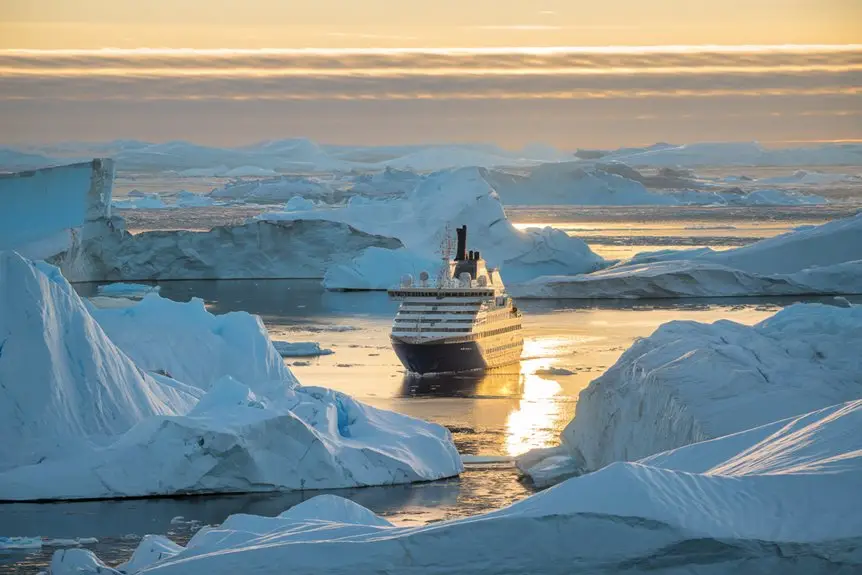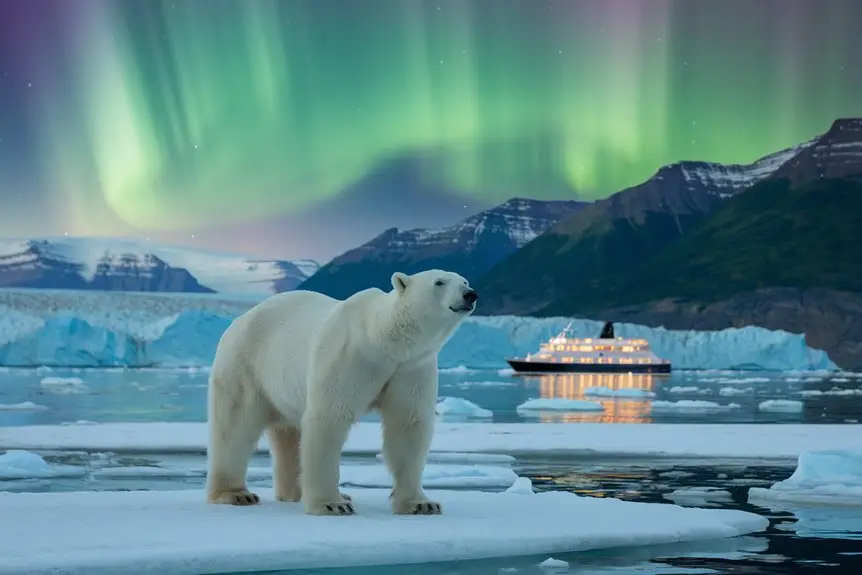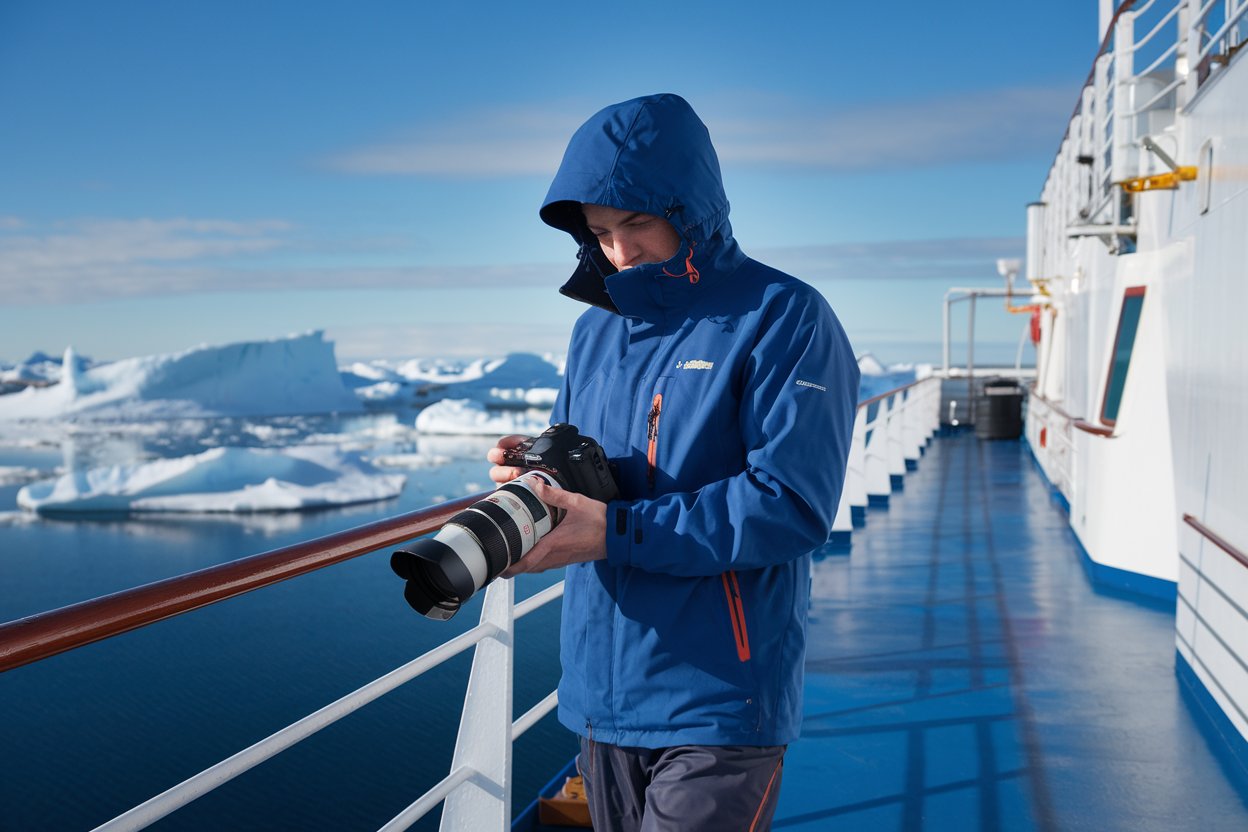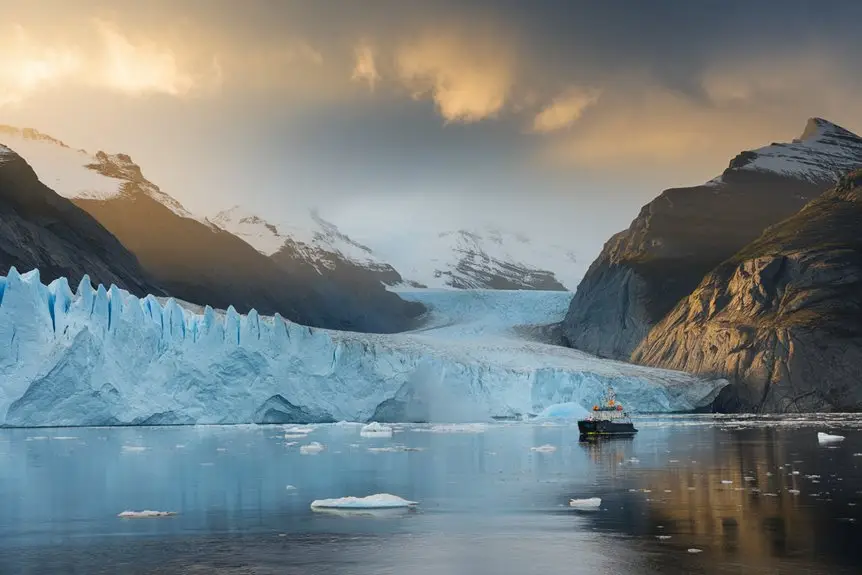The best time for your Svalbard cruise is July and August. You’ll experience temperatures of 3-7°C and constant daylight. These conditions give you optimal chances to spot polar bears, walruses and seals.
For other Arctic Cruise Destinations check out our Arctic Cruise Destinations Guide page.
You need to book your cabin 12-18 months before departure. Your essential packing list should include waterproof clothing and sturdy boots for Arctic conditions.
Your ideal ship should have strong ice ratings and skilled guides. These features let you safely explore Svalbard’s eight major glaciers and wildlife-rich fjords.
You’ll get the most from a 7-15 day cruise. Look for ships that offer flexible schedules and plenty of deck space for viewing wildlife.
🐧 Polar Cruise Enquiry 🐻❄️
Our team of polar travel specialists have personally explored both the Arctic and Antarctic regions – from tracking polar bears in Svalbard to kayaking with penguins off the Antarctic Peninsula. Let us find the right polar expedition cruise for you.
Key Takeaways
- Book 12-18 months ahead, aim for July-August (peak wildlife & daylight).
- Pack: Waterproof outerwear, warm layers, rubber boots, sunglasses & sunscreen.
- Ship Features: Choose ice-rated vessels with good observation decks for wildlife viewing.
- Trip Options: Pick between 7 days (highlights), 10 days (balanced), or 15 days (comprehensive).
- Top Spots: Monaco & Svea Glaciers offer marine life & polar bears, plus scenic fjords.
Best Seasons for Polar Cruising

The best time for your Svalbard cruise depends on specific seasonal conditions. The peak season runs through July and August, when you’ll experience optimal conditions with temperatures between 3-7°C.
The Midnight Sun provides 24-hour daylight during these months, making wildlife spotting easier. You can spot polar bears and other Arctic wildlife most effectively during summer months. The melting ice opens up more sailing routes, giving you better access to different areas of the archipelago.
Summer conditions also let you try activities like kayaking and small boat trips. The Northern Lights season from October to February offers stunning aurora displays, but ice blocks most cruise routes.
March and April bring longer daylight hours and snowy landscapes, though cruise operators rarely run trips during this time. Your best choice for a complete Arctic experience remains the summer months.
You’ll get the most reliable weather, maximum daylight, and the widest range of activities during this period.
Wildlife Encounters and Natural Wonders

Svalbard’s waters host 19 marine mammal species, making it a top Arctic wildlife spot. You can spot polar bears as they hunt on ice floes or search for bird eggs on the shoreline.
You’ll often see walruses resting on beaches and seals swimming in the cold waters. Your expedition ship and Zodiac boat trips let you get close to wildlife whilst staying safe.
During summer breeding season, you’ll spot Arctic foxes, Svalbard reindeer and seabirds like puffins and Arctic terns. The highlight might be watching a polar bear mum with her cubs in their natural habitat.
The cruise’s flexible schedule means you’ll get the best chances to see wildlife in this Arctic sanctuary.
Essential Gear and Safety

You need specific gear to stay safe and comfortable in Svalbard’s harsh environment:
Clothing:
- Waterproof jacket and trousers (15,000mm rating minimum)
- Multiple warm layers
- Waterproof rubber boots for Zodiac trips
- Sturdy walking boots for land excursions
Safety Items:
- Personal first-aid kit
- Double supply of your regular medications
- UV-protective sunglasses
- High-factor sunblock
- Quality binoculars for wildlife viewing
- Waterproof bags for camera gear
Safety Tips:
- Learn your ship’s emergency procedures before departure
- Keep your life jacket within reach during water activities
- Check all your gear works before leaving home
- Test your waterproof clothing before the trip
Your ship provides major safety equipment, but you’re responsible for your personal gear.
Pack these items well in advance and you’ll be ready to spot polar bears, whales and Arctic wildlife safely and comfortably.
See what’s on offer from the Northwest Passage Cruise Guide for a different Arctic Cruise destination.
Choosing Your Ideal Cruise

You need to consider several essential factors when choosing your Svalbard cruise. Your first decision involves trip length – you can pick between 7-15 days at sea.
Short cruises (7-10 days):
- Focus on specific Arctic regions
- Suit tighter schedules
- Cost less overall
Long cruises (11-14 days):
- Offer more polar bear viewing chances
- Access remote locations
- Include extra exploration time
You should book your cabin 12-18 months before sailing. Pick vessels with strong ice ratings, such as the Ortelius or MV Plancius, for safe Arctic navigation.
Your viewing experience matters:
- Look for ships with wide deck spaces
- Choose cabins with private balconies
- Check the observation lounge size
You’ll want experienced guides leading your journey. Check these points:
- Expedition team’s expertise
- Wildlife-rich stops at Hopen and Edgeoya
- Options to combine with East Greenland or Iceland
These choices will shape your Arctic adventure and help you spot more wildlife during your journey.
Must-Visit Fjords and Glaciers

Svalbard’s fjords and glaciers offer you amazing Arctic experiences on your cruise.
You’ll discover eight major glaciers in Hornsund and see distinctive red mountains in Raudfjorden. Kongsfjorden shows off its snow-topped peaks, while Isfjorden welcomes you with its rich wildlife.
Key glacier experiences:
- Watch ice blocks break from Monaco Glacier’s bright blue walls
- See colourful icebergs float near Svea Glacier
- Hear ice cracking at Wahlenbergbreen
- Spot seals swimming between ice pieces
You can spot Arctic wildlife throughout your journey:
- Polar bears
- Whales
- Seabirds
The clear Arctic light makes these locations perfect for photography. You’ll find stunning views at every turn, from massive ice walls to snow-dusted mountain peaks.
Tips for your visit:
- Keep your camera ready
- Listen for glacier sounds
- Watch for wildlife movement
- Stay warm and comfortable
Every fjord and glacier gives you unique views of Svalbard’s raw Arctic beauty, making each stop on your journey special.
Frequently Asked Questions
Can I Use My Regular Cell Phone Service in Svalbard Waters?
Your mobile phone service in Svalbard works differently from mainland coverage. You’ll get regular mobile signals near populated areas like Longyearbyen, but coverage disappears quickly when you move offshore. Your European roaming will function where there’s a signal, but you shouldn’t rely on it alone. Pack a satellite phone for reliable communication, especially during sea travel or remote area visits.
Are There Medical Facilities Onboard for Emergency Situations?
You’ll find comprehensive medical facilities on every cruise ship. Your ship has a dedicated first aid station staffed by qualified medical professionals. A licensed ship’s doctor is available 24/7 for emergencies. The medical centre stocks essential medicines and equipment for common illnesses and injuries. If you need advanced care, the ship’s team can arrange helicopter evacuation to nearby hospitals. The medical facilities accept most major travel insurance plans, but you’ll need to pay for services upfront.
What Photography Equipment Is Allowed During Helicopter Excursions?
Helicopter tours aren’t available in Svalbard due to local regulations. You should prepare your camera equipment for Zodiac boat rides and land excursions instead. These activities offer excellent photography opportunities throughout your Arctic journey.
Is Seasickness Common During Svalbard Cruises?
Seasickness affects many travellers on Svalbard cruises, particularly during rough weather. You can reduce symptoms by booking a cruise ship with stabilisers and taking motion sickness tablets before sailing. Larger vessels tend to handle waves better than smaller boats, making them a good choice if you’re prone to seasickness. Your ship’s doctor or local pharmacies stock effective medication to help you manage any discomfort during your journey.
Can Children Participate in Polar Diving Activities?
Polar diving requires extensive experience, regardless of your child’s age. You need at least 30 logged cold-water dives before attempting polar diving. Your child must wait until they have gained this essential experience. Standard diving certifications alone are not enough for these challenging conditions.
Thinking about something different? Check out the Greenland Expedition Cruise Routes.
🐧 Polar Cruise Enquiry 🐻❄️
Our team of polar travel specialists have personally explored both the Arctic and Antarctic regions – from tracking polar bears in Svalbard to kayaking with penguins off the Antarctic Peninsula. Let us find the right polar expedition cruise for you.
